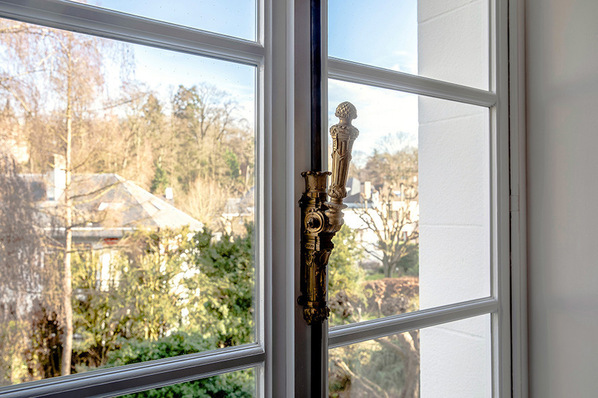In an interview with GLASWELT, Mirco Röttger from Isolette, explained when using heat-treated glass is the right choice and when it would be better to use splinter-free laminated glass as an alternative. He then went on to show how increased sound protection can be provided and why it is often beneficial to integrate sun protection into the insulating glass.
gw_news – Mr Röttger, when functional glass needs to provide extra safety, how is this done?
Mirco Röttger – They are many ways to do this, and it primarily involves altering the properties of the individual panes. Along with its increased tolerance of temperature change, toughened heat-treated glass is able to absorb greater impact loads and is thus more resistant to breakage. If breakage does occur, the glass will break up into small particles that cannot cause major injuries, thanks to the toughening process. Splinter-free laminated glass also has the property of minimising injury. For this type of glass, films of various types and thicknesses can be used to further increase the safety in terms of resistance to impact and breakage. Special acoustic films can also be used to generate increased sound protection.
gw_news – How can glass also trigger an alarm?
Röttger – This can be done by fitting heat-treated glass with an electrical alarm loop, for example. Glass of this type can then be incorporated into a Class C burglar alarm system. In the event of damage, the current flow is interrupted, which triggers an alarm. Put simply, using this combination of safety glazing means that a burglar can only break through the glass with great difficulty, if at all, and this will also trigger an alarm, often without the burglar noticing.
gw_news – Are there other ways to use glass to increase safety?
Röttger – There are hardly any alternatives to the primary burglary protection by means of window and facade. It is however possible to combine this approach with further measures to create passive burglar protection, some of which are supported by insurance companies. For example, light sources in or on the glazing can create the impression that the building is inhabited, to put off potential burglars. A further aspect is to conceal the interior space, by using switchable glass. And blinds can be used in double-glazing cavities to provide an outstanding privacy screen, in addition to their sun protection function.

gw_news – Triple-glazed insulating glass is commonly used today. Does it make sense to use the safety glass types mentioned earlier with this insulating glass?
Röttger – Today, there is no dispute that there is a need for greater security. For this reason, using safety glass is fundamentally a good idea. This applies regardless of the type of glazing used. Furthermore, the additional pane in triple-glazed insulating glass does not automatically provide greater security, despite providing greater thermal protection.
At this point it should be noted that it is actually advisable to use heat-treated glass for the middle pane in triple-glazed glass. This can prevent breakage, as the middle pane can be exposed to very high temperature and pressure fluctuations.
gw_news – Where is safety glass becoming increasing common? Could you name a few examples?
Röttger – Airports, train stations, public authority and court buildings and other public facilities currently require the entire range of safety glass types. The functions needed in these applications range from breakage safety and bullet resistance to blast-proof and explosion-proof glass.
A new field is opening up in the course of increasing digitisation in the private sector and in companies in relation to highly sensitive data and technologies. The safety aspect is being further expanded with the addition of shielding and privacy. This affects specifically the glazing in the facade and the interior (glass doors, partitions, etc.).
gw_news – Is it true that safety glazing needs to be inspected in conjunction with the window and facade structures?
Röttger – That’s right. In high-security applications in particular, all the materials and structures used in the outer shell of the building need to be inspected for correct function and tolerance both separately and, at the points where they meet, in combination. Furthermore, increased attention is being given to correct maintenance and monitoring, for example for the alarm safety glass and the switchable glazing mentioned earlier.
The interview with Mirco Röttger from Isolette (www.isolette.de) was conducted by Matthias Rehberger.













